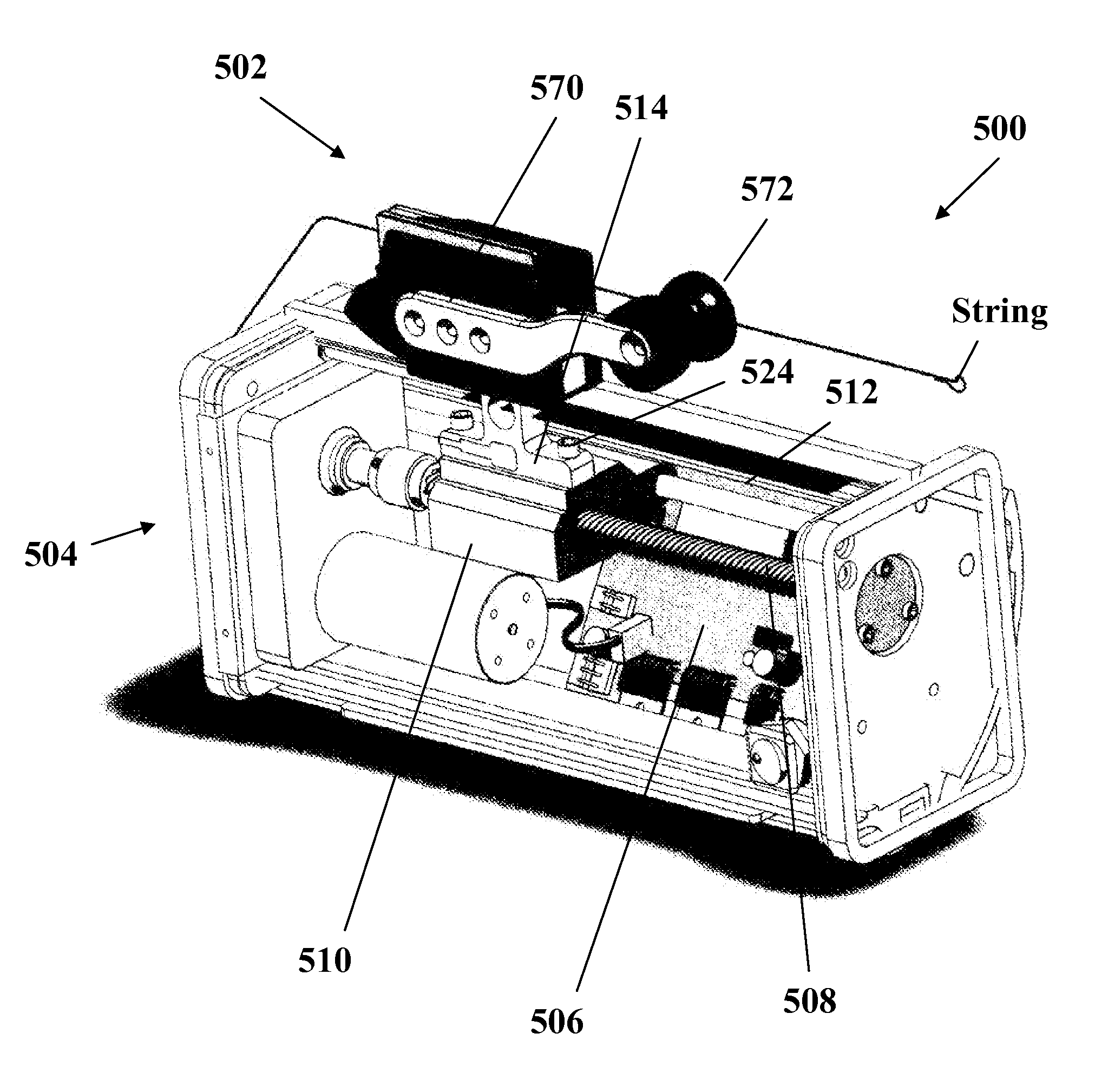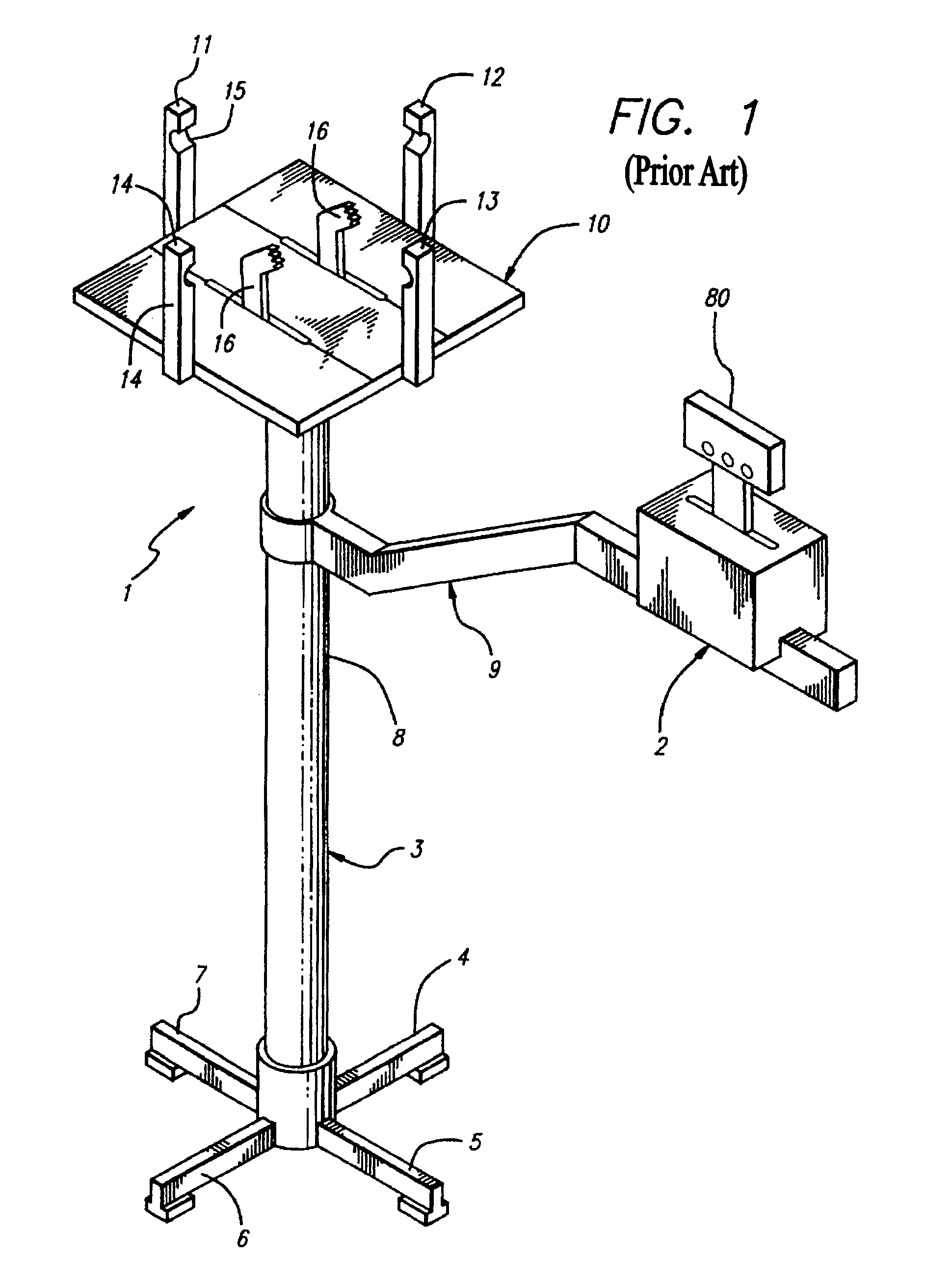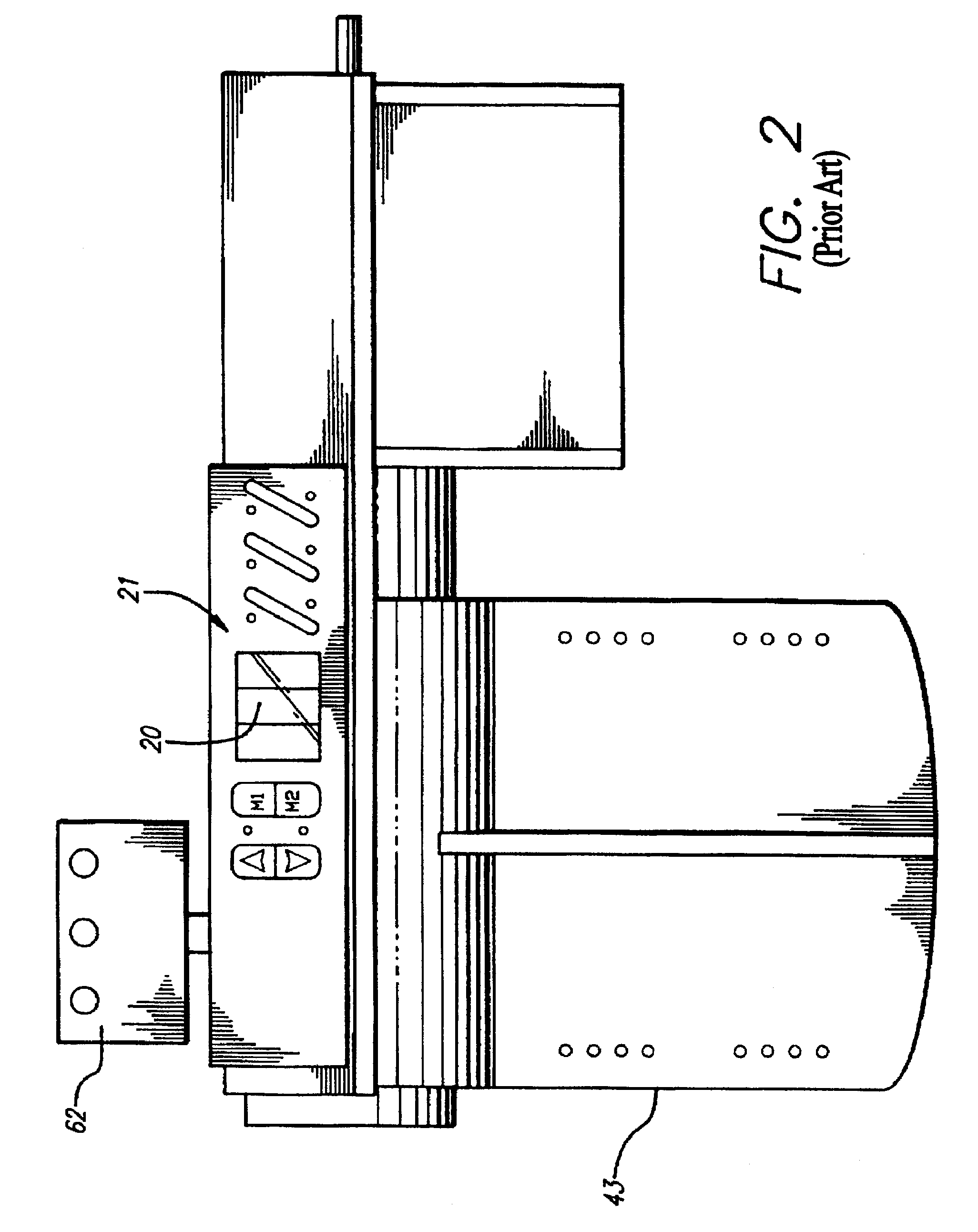Electronic racquet stringing machine
a stringing machine and electronic technology, applied in the field of racket stringing machines, can solve the problems of limited resolution and frequent calibration
- Summary
- Abstract
- Description
- Claims
- Application Information
AI Technical Summary
Benefits of technology
Problems solved by technology
Method used
Image
Examples
Embodiment Construction
[0034]FIG. 1 is a view of applicant's stringing machine with its two major components, the racket cradle assembly 1 and the tension head assembly 2. The stringing machine has a base 3 including legs 4, 5, 6 and 7 spaced from each other at 90 degrees. The base also includes a vertical support column 8, on top of which is fitted the racket cradle assembly tension bar 9. Mounted on the support column and above the tension bar is the racket cradle assembly which takes the form of a turntable. Both the tension bar and the racket cradle assembly pivot on the support column so that when a racket is mounted onto the cradle, as we will see, the string can be aligned from the point it leaves the racket frame to where it enters the snatch vise 80.
[0035]The racket cradle assembly platen 10 has two functions; to support four movable posts or fixing elements 11, 12, 13 and 14 that are placed at the top, bottom and two sides of the racket and ensure the horizontal clamping in position of the tenni...
PUM
 Login to View More
Login to View More Abstract
Description
Claims
Application Information
 Login to View More
Login to View More - R&D
- Intellectual Property
- Life Sciences
- Materials
- Tech Scout
- Unparalleled Data Quality
- Higher Quality Content
- 60% Fewer Hallucinations
Browse by: Latest US Patents, China's latest patents, Technical Efficacy Thesaurus, Application Domain, Technology Topic, Popular Technical Reports.
© 2025 PatSnap. All rights reserved.Legal|Privacy policy|Modern Slavery Act Transparency Statement|Sitemap|About US| Contact US: help@patsnap.com



